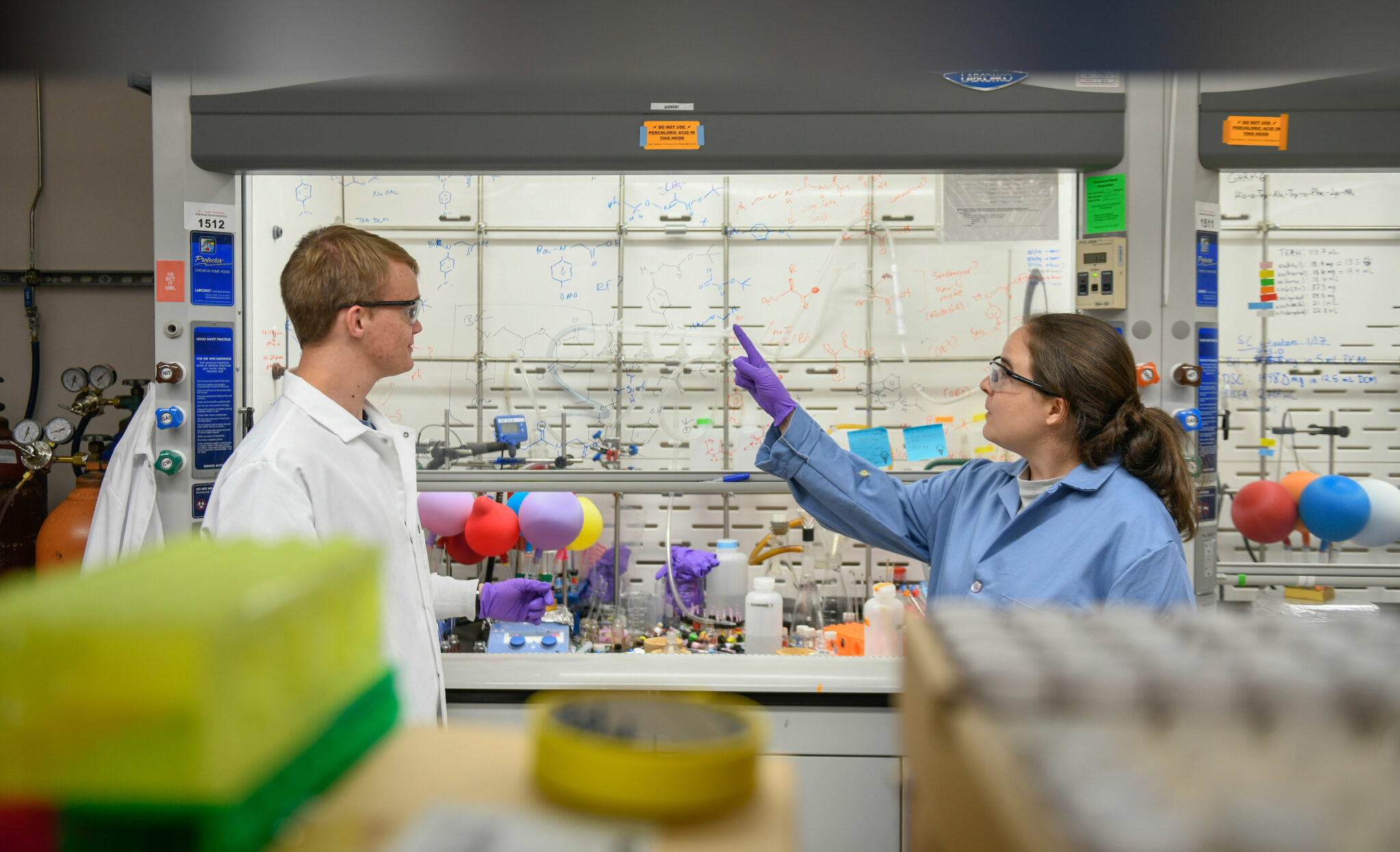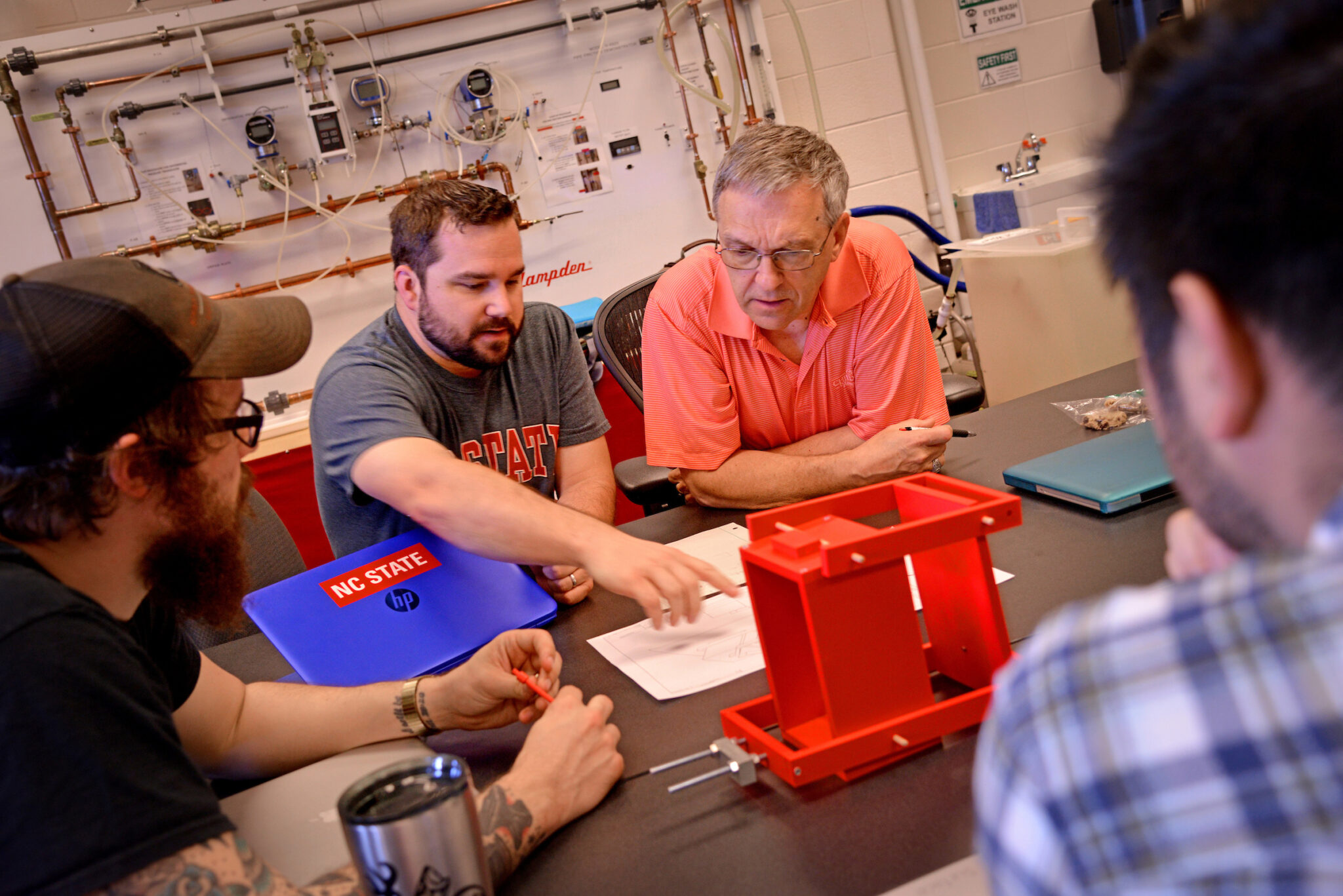References for STEM-related Education and Training Proposals

Education and training proposals are generally based on a literature review, and need to have assessments and evidence-based best practices. The list below is a compilation of references related to STEM that may be useful for developing a strong education and training proposal.
- National Science Foundation, National Center for Science and Engineering Statistics. (2019). Women, Minorities, and Persons with Disabilities in Science and Engineering: 2019. Alexandria, VA.
- National Science & Technology Council: Committee on STEM Education. (2018). Charting a course for success: America’s strategy for STEM education.
- National Science Board. (2018). Science and Engineering Indicators. Arlington, VA: National Science Foundation
- National Science Board. (2018). Our Nation’s Future Competitiveness Relies on Building a STEM-Capable U.S. Workforce: A Policy Companion Statement to Science and Engineering Indicators 2018. Arlington, VA: National Science Foundation.
- National Science Foundation. (2018). Building the future: Investing in discovery and innovation – NSF strategic plan for fiscal years (FY) 2018 – 2022 (NSF18045).
- National Academies of Sciences, Engineering, and Medicine. (2018). Measuring the 21st-century science and engineering workforce population: Evolving needs. Washington, DC: The National Academies Press.
- National Academies of Sciences, Engineering, and Medicine. (2018). English learners in STEM subjects: Transforming classrooms, schools, and lives. Washington, DC: The National Academies Press.
- National Academies of Sciences, Engineering, and Medicine. (2018). Data Science for Undergraduates: Opportunities and Options. Washington, DC: The National Academies Press.
- National Academies of Sciences, Engineering, and Medicine. (2018). Graduate STEM Education for the 21st Century. Washington, DC: The National Academies Press.
- National Academies of Sciences, Engineering, and Medicine. (2018). Measuring the 21st Century Science and Engineering Workforce Population: Evolving Needs. Washington, DC: The National Academies Press.
- National Academies of Sciences, Engineering, and Medicine. (2018). Indicators for Monitoring Undergraduate STEM Education. Washington, DC: The National Academies Press.
- National Academies of Sciences, Engineering, and Medicine. (2017). Supporting Students’ College Success: The Role of Assessment of Intrapersonal and Interpersonal Competencies. Washington, DC: The National Academies Press.
- National Academies of Sciences, Engineering, and Medicine. (2017). Promoting the Educational Success of Children and Youth Learning English: Promising Futures. Washington, DC: The National Academies Press.
- National Academies of Sciences, Engineering, and Medicine. (2017). Undergraduate Research Experiences for STEM Students: Successes, Challenges, and Opportunities. Washington, DC: The National Academies Press.
- National Academies of Sciences, Engineering, and Medicine. (2017). Building America’s Skilled Technical Workforce. Washington, DC: The National Academies Press.
- National Academies of Sciences, Engineering, and Medicine. (2017). Communicating Science Effectively: A Research Agenda. Washington, DC: The National Academies Press.
- National Academies of Sciences, Engineering, and Medicine. (2017). Building America’s skilled technical workforce. Washington, DC: The National Academies Press.
- National Academies of Sciences, Engineering, and Medicine. (2016). Science Literacy: Concepts, Contexts, and Consequences. Washington, DC: The National Academies Press.
- National Academies of Sciences, Engineering, and Medicine. (2016). Barriers and Opportunities for 2-Year and 4-Year STEM Degrees: Systemic Change to Support Students’ Diverse Pathways. Washington, DC: The National Academies Press.
- National Academies of Sciences, Engineering, and Medicine. (2016). Developing National STEM Workforce Strategy: A workshop summary. Washington, DC: The National Academies Press.
- National Research Council. (2015). Identifying and supporting productive STEM programs in out-of-school settings. Washington, DC: The National Academies Press.
- National Research Council. (2015). Enhancing the Effectiveness of Team Science. Washington, DC: The National Academies Press.
- National Research Council. (2015). Identifying and Supporting Productive STEM Programs in Out-of-School Settings. Washington, DC: The National Academies Press.
- National Academies of Sciences, Engineering, and Medicine. (2015). Science Teachers’ Learning: Enhancing Opportunities, Creating Supportive Contexts. Washington, DC: The National Academies Press.
- Bailey, T.R., Jaggars, S.S., and Jenkins, D. (2015). Redesigning America’s community colleges: A clearer path to student success. Cambridge, MA: Harvard University Press.
- Kober, N. (2015). Reaching Students: What the Research Says About Effective Instruction in Undergraduate Science and Engineering. Board on Science Education, Division of Behavioral and Social Sciences and Education. Washington, DC: The National Academies Press.
- Executive Office of the President. (January 2014). Increasing college opportunity for low-income students: Promising models and a call to action.
- National Research Council and National Academy of Engineering. (2013). Educating Engineers: Preparing 21st Century Leaders in the Context of New Modes of Learning; Summary of a Forum. Prepared by Steve Olson. Washington DC: The National Academies Press.
- Chen, X. (2013). STEM Attrition: College Students’ Paths Into and Out of STEM Fields (NCES 2014-001).Washington DC: National Center for Education Statistics, Institute of Education Sciences U.S. Department of Education.
- President’s Council of Advisors on Science and Technology, Executive Office of the President. (February 2013). Engage to excel: Producing one million additional college graduates with degrees in science, technology, engineering, and mathematics.
- President’s Council of Advisors. (2012). Engage to Excel: Producing One Million Additional College Graduates with Degrees in Science, Technology, Engineering, and Mathematics. Washington, DC: Executive Office of the White House.
- Tinto, V. (2012). Completing college: Rethinking institutional action. Chicago: The University of Chicago Press.
- National Research Council. (2012). Education for life and work: Developing transferable knowledge and skills in the 21st century. Washington, DC: The National Academies Press.
- National Research Council. (2012). Discipline-Based Education Research: Understanding and Improving Learning in Undergraduate Science and Engineering. S.R. Singer, N.R. Nielsen, and H.A. Schweingeruber, Editors. Committee on the Status, Contributions, and Future Directions of Discipline-Based Education Research. Board on Science Education, Division of Behavioral and Social Sciences and Education. Washington, DC: The National Academies Press.
- National Research Council. (2012). Education for life and work: Developing transferable knowledge and skills in the 21st century. Committee on Defining Deeper Learning and 21st Century Skills, J.W. Pellegrino and M.L. Hilton, Editors. Board on Testing and Assessment and Board on Science Education, Division of Behavioral and Social Sciences and Education. Washington, DC: The National Academies Press.
- National Research Council. (2012). A framework for K-12 science education practices, crosscutting concepts, and core ideas. Committee on a Conceptual Framework for New K-12 Science Education Standards. Board on Science Education, Division of Behavioral and Social Sciences and Education. Washington, DC: The National Academies Press.
- National Research Council. (2012). Discipline-based education research: Understanding and improving learning in undergraduate science and engineering. Committee on the Status, Contributions, and Future Directions of Discipline-Based Education Research. Board on Science Education, Division of Behavioral and Social Sciences and Education. Washington, DC: The National Academies Press.
- National Research Council. (2012). Monitoring progress toward successful K-12 STEM education: A nation advancing? Committee on the Evaluation Framework for Successful K-12 STEM Education. Board on Science Education and Board on Testing and Assessment, Division of Behavioral and Social Sciences and Education.
- Lumina Foundation. (2011). Four Steps to Finishing First in Higher Education. Indianapolis, IN.
- National Research Council. (2011). Expanding Underrepresented Minority Participation: America’s Science and Technology Talent at the Crossroads. Committee on Science, Engineering, and Public Policy. Washington, DC: The National Academies Press.
- National Research Council. (2011). Promising Practices in Undergraduate Science, Technology, Engineering, and Mathematics Education: Summary of Two Workshops. Natalie Nielsen, Rapporteur, Planning Committee on Evidence on Selected Innovations in Undergraduate STEM Education. Board on Science Education, Division of Behavioral and Social Sciences and Education. Washington, DC: The National Academies Press.
- National Academies of Sciences, Engineering, and Medicine. (2011). Expanding underrepresented minority participation: America’s science and technology talent at the crossroads. Washington, DC: The National Academies Press.
- Carnevale, A.P., Smith, N., and Melton, M. (2011). STEM. Washington, DC: Georgetown University Center on Education and the Workforce.
- Carnevale, A.P., Smith, N, and Strohl, J. (2010). Help Wanted: Projections of Jobs and Education Requirements Through 2018. Washington, DC: Georgetown University Center on Education and the Workforce.
- Zemsky, R. (2009). Making reform work: The case for transforming American higher education. New Brunswick: Rutgers University Press.
- National Research Council. (2009). Learning science in informal environments: People, places, and pursuits. Washington, DC: The National Academies Press.
- Bowen, W.G., Chingos, M.M., and McPherson, M.S. (2009). Crossing the finish line: Completing college at America’s public universities. Princeton, N.J.: Princeton University Press.
- College Board. (2008). The Effectiveness of Financial Aid Policies: What the Research Tells Us. Sandy Baum, Michael McPherson, and Patricia Steele, Editors. The College Board. New York: New York.
- Kazis, R., Vargas, J., and Hoffman, N. (Eds.). (2004). Double the numbers: Increasing postsecondary credentials for underrepresented youth. Cambridge, MA: Harvard Education Press.
- Kelly, T.K, Butz, W.P., Carroll, S., Adamson, D.M., and Bloom, G. (Eds.). (2004). The U.S. Scientific and Technical Workforce: Improving Data for Decision making. Rand Corporation.
- Categories:


